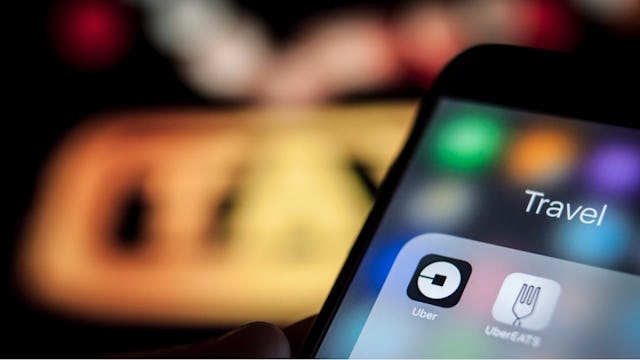Our Healthcare System Is So Costly People Are Using Uber Instead Of Ambulances

Some people are calling an Uber instead of an ambulance
Our healthcare system is so costly that people have started using Uber to get to the hospital instead of an ambulance, according to a new study that tracked the use of emergency vehicles across the country.
David Slusky, a University of Kansas economist, and Leon Moskatel, of the Department of Medicine at Scripps Mercy Hospital in San Diego, partnered for the study. They reviewed the records of ambulance rates in 766 cities in 43 states across the United States. The data they studied was from when Uber entered those markets from 2013 through 2015. They determined that Uber reduced the ambulance volume per capita by at least 7%. “In order to lower health care spending while improving health outcomes, people can use the least-skilled professional who is still qualified,” Slusky explained. “It’s the same in the provider space: you don’t need a neurosurgeon to diagnose strep throat.”
I mean, he has a point.
The authors of the study think people have opted for Uber over ambulances to save money. Obviously, right? Taking an ambulance can cost hundreds to thousands of dollars and isn’t really necessary in a lot of medical situations. “Many patients don’t need something that can break traffic laws and don’t need something staffed by paramedics with a bunch of fancy equipment,” Slusky said. So it makes sense that someone would use Uber when they’re too sick to drive themselves, but not in bad enough shape to need constant medical care during the ride to the hospital.
Another study out of Kalamazoo College found that better (and more affordable) access to a vehicle means better healthcare outcomes, because of course, getting to a hospital quickly when you’re injured or critically ill is always a good thing. Uber is filling what appears to be a void in our healthcare system.
But it’s also a very slippery slope. No one would want people to stop taking ambulances when they’re dealing with a severe or critical medical situation. A true medical emergency still requires an ambulance. Obviously an Uber driver is ill-equipped to keep a patient alive on the way to the emergency room, and this is why ambulances should be a no-brainer for anyone who needs one. Cost simply shouldn’t be a concern here, though clearly, it is.
In addition to saving money, there could be another benefit of the 7% drop in ambulance rides thanks to car sharing services. Ideally, the reduction in calls freed up some time for paramedics and decreased the wait time for folks who called an ambulance. “Given that even a reduction of a few minutes can drastically improve survival rates for serious conditions, this could be associated with a substantial welfare improvement,” the researchers said in the study. While it doesn’t drastically reduce the overall costs of the healthcare system, the authors of the study did note that saving some money is better than saving none. Slusky explained: “We want to find every way possible to bend the medical cost curve.”